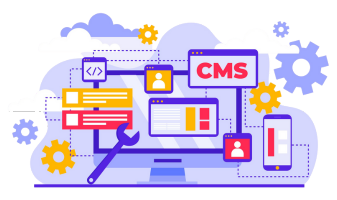Quick Summary
Boost your WordPress site’s performance and turn visitors into customers with effective conversion rate optimization. Learn how to improve user experience, speed, mobile usability, and checkout processes. Use A/B testing, pop-ups, social proof, personalized content, and smart plugins to increase conversions, reduce cart abandonment, and engage visitors. Follow proven CRO strategies and analytics insights to grow sales, leads, and overall website success without spending more on ads.
Introduction
Conversion Rate Optimization, or CRO, is the process of making your WordPress website better so more visitors take the action you want. This action can be anything buying a product, filling out a form, signing up for a newsletter, or clicking a button. CRO helps you understand how visitors behave and what stops them from completing an action.
What Is Conversion Rate?
Your conversion rate is the percentage of visitors who complete your desired action.
For example, if one hundred people visit your website and five people make a purchase, your conversion rate is five percent. This rate shows how well your website turns visitors into customers. A higher conversion rate means your site is doing a good job.
Why Conversion Rate Optimization Matters for WordPress Sites
CRO matters because it helps you get better results without spending more money on ads or traffic. By improving your WordPress site’s design, speed, and user experience, you can increase conversions and lower the bounce rate.
A well-optimized WordPress website guides people smoothly from the landing page to the final action. It reduces cart abandonment, builds trust, and improves the overall experience. CRO also helps you understand what your visitors need and how to serve them better.
Understanding the Conversion Funnel
A conversion funnel explains the journey a visitor takes on your website. It helps you see where visitors leave and where improvement is needed. When you understand the funnel, you can fix problems, create better pages, and boost your conversion rate.
Stages of the Funnel
Most conversion funnels include these stages:
- Awareness – Visitors learn about your website.
- Interest – They explore and check what you offer.
- Consideration – They compare options or read customer reviews.
- Action – They complete your desired goal.
- Post-Action – They return, share feedback, or become repeat customers.
Each stage needs clear messages, smooth navigation, and a strong user experience.
Setting a Clear Conversion Goal
Before you improve your website, you must decide what action you want visitors to take. This is your conversion goal. Examples include:
- Buying a product
- Signing up for a free trial
- Filling out a form
- Downloading a file
- Adding a product to the cart
A clear goal helps you measure success and guide your optimization efforts.
Guide to Conversion Rate Optimization: Tips to Boost Your Site’s Performance
Conversion Rate Optimization (CRO) is a crucial process for improving your WordPress website and increasing your site’s conversion rate. The process of increasing the percentage of visitors who take a desired action—such as making a purchase, signing up for a newsletter, or downloading a file—helps your business grow without solely relying on more website traffic or paid ads. Conversion rate optimization helps you understand visitor behavior, identify problem areas, and apply effective tactics to improve conversion and user engagement and conversion.
Using the right plugins on your site is essential for effective conversion optimization. Plugins can help with A/B testing, landing page creation, heatmaps, and WooCommerce conversion rate improvements. These tools allow you to track different conversion types, monitor user engagement, and implement changes based on real data. By leveraging these plugins, you can boost conversion rate, increase conversion rates across your website, and enhance overall web traffic.
Following CRO best practices and conversion rate optimization tips ensures that every page on your site contributes to your goals. Strategies include simplifying navigation, improving website speed, creating high-converting landing pages, and providing social proof. Testing variations and using analytics tools allows you to refine your approach continuously. By applying these conversion rate optimization tactics consistently, you can boost conversion, improve conversion across pages, and maintain a smooth user experience.
Ultimately, CRO is not just about increasing clicks—it’s about creating a better website that engages visitors, encourages action, and maximizes the potential of your existing web traffic. Whether you are focusing on WooCommerce conversion rate, optimizing forms, or improving content, a structured guide to conversion rate optimization ensures long-term growth and measurable results.
How to Calculate Your Conversion Rate
The formula is simple:
Conversion Rate equals the number of conversions divided by the number of visitors, then multiplied by one hundred.
Example:
If two hundred people visit your website and ten complete your goal, your conversion rate becomes five percent.
Tracking your conversion helps you understand what is working and what needs improvement. Tools like Google Analytics or helpful WordPress plugins make this easy.
Common Reasons for Low Conversion Rates
Many WordPress sites struggle with low conversion because small issues stop visitors from taking action. When you understand these problems, you can fix them and improve your results.
Slow Load Times
A slow website makes visitors leave before the page even loads. People expect a site to open fast. When pages take too long, your conversion rate drops. Slow load times also hurt your search ranking and lower trust.
Poor User Experience
A confusing layout, messy navigation, or too many steps can keep visitors from completing your goal. If people cannot find what they need, they leave. A smooth and simple user experience helps visitors move through your website with ease.
High Bounce Rate
A high bounce rate means many visitors leave after seeing only one page. This often happens when content is unclear, the design feels outdated, or the page does not match what they expected. A strong headline, clean layout, and clear message help lower the bounce rate.
Mobile Conversion Challenges
Many visitors browse your WordPress site from a mobile device. If your site is not mobile-friendly, small buttons, broken layouts, or slow loading can push visitors away. Good mobile optimization helps increase your conversion rate on all screen sizes.
Cart Abandonment in WooCommerce
In WooCommerce stores, many users add items to the cart but never complete the purchase. This can happen due to hidden fees, long checkout forms, missing payment options, or a lack of trust signals. Reducing friction in the cart can help save more sales.
Best Conversion Rate Optimization Strategies for WordPress
Strong CRO is not a one-time task. It is an ongoing process that helps your website improve over time. These strategies help you increase engagement, reduce friction, and guide visitors to take action.
Optimization Techniques for Higher Conversion Rates
Simple improvements can make a big difference. You can test different headlines, change button text, improve images, or remove distractions. Tools for testing help you see what works and what does not. Small tweaks often lead to higher conversion rates.
Improving User Experience and Engagement
A clean design, easy navigation, and clear messaging help visitors stay longer. Add simple menus, readable text, and helpful content. Engaged visitors explore more pages, trust your site, and are more likely to complete your desired action.
Creating High-Converting Landing Pages
A good landing page has a clear message, a strong call-to-action, and no clutter. Focus on one goal at a time. Use simple words, clean images, and trust-building elements like reviews or badges. A focused landing page helps boost your conversion rate.
Improving Website Performance
Fast performance is key to good CRO. Compress images, use caching plugins, and choose fast hosting. A well-optimized site loads quickly, runs smoothly, and keeps visitors from leaving early.
Reducing Friction in the Checkout Process
When the checkout process feels long or confusing, customers stop halfway. You can remove extra fields, offer guest checkout, and show clear shipping costs. Fewer steps make visitors feel comfortable and help reduce cart abandonment.
Using Customer Reviews and Social Proof
People trust other people. Reviews, ratings, testimonials, and user photos help visitors feel safe. Social proof shows that others had a good experience. This builds trust and helps improve your conversion rate.
Boosting Engagement and Conversion
Engagement tools like pop-ups, chat widgets, or simple quizzes can guide visitors to the right place. Personalized messages or small offers can also encourage action. When visitors feel supported, they stay longer and convert more often.
WordPress Optimization Tools and Plugins
The right tools can help you understand your visitors, test changes, and improve your site. These tools make the CRO process easier and help you boost your conversion rate.
Best CRO Tools for WordPress
There are many helpful tools that guide you through the optimization process. These tools show what visitors click, how they move through your pages, and where they leave. Heatmaps, screen recordings, and behavior reports help you improve your website experience and fix weak areas.
Plugins for A and B Testing
A and B testing lets you compare two versions of a page to see which one brings better results. You can test headlines, buttons, images, or layouts. WordPress offers simple plugins that let you run tests without coding. Testing helps you make choices based on real visitor behavior.
Plugins to Improve Website Speed
A fast site helps you increase your conversion rate. Speed plugins can compress images, reduce file sizes, clean your database, and add caching. When your WordPress pages load quickly, more visitors stay and complete your desired action.
Tools for Tracking Your Conversion
Tracking tools help you measure your conversion goal. They show how many visitors take action and how they move through your pages. These tools also highlight problem areas. When you track your website performance, you can improve your strategy step by step.
Tools for Ecommerce Conversion Rate Optimization
WooCommerce stores need special tools to track carts, sales, product views, and checkout behavior. These tools help you reduce cart abandonment, understand customer actions, and Improve your conversion rate. You can also track repeat customers, product performance, and overall revenue growth.
Analytics and Tracking for Better Conversion Rates
Analytics help you understand what visitors do on your website. With the right tools, you can see where visitors come from, how long they stay, and what they click. This helps you improve user experience and increase conversions.
Using Google Analytics
Google Analytics is one of the most common tools for tracking website activity. It helps you see traffic sources, user behavior, page performance, and conversion paths. This information makes it easier to optimize your website and improve results.
Understanding User Behavior
To increase your conversion rate, you must understand how visitors act on your site. Behavior reports show your popular pages, drop-off points, scroll depth, and actions taken. When you know what users do, you can fix pages that cause confusion.
Measuring the Percentage of Website Visitors Who Convert
Your conversion rate shows how many visitors complete your goal. This percentage helps you understand the strength of your website. With tracking tools, you can see how many people visit your site and how many take action.
Monitoring the Overall Conversion Rate
Your overall conversion rate tells you how well your full website performs. You can measure form signups, product sales, downloads, or any other goal. When you monitor this often, you can see drops early and fix problems fast.
Essential Analytics Tools
Important analytics tools help you track traffic, behavior, sales, and engagement. They also show trends, page issues, and improvement ideas. Using the right tools makes your digital marketing stronger and keeps your CRO process on the right path.
Advanced CRO Techniques for WordPress Sites
Once your basic CRO is in place, advanced strategies help you take your site to the next level. These techniques guide visitors more effectively and improve your overall conversion.
Personalization Strategies
Personalization shows content, offers, or recommendations based on visitor behavior. When a website feels tailored to a user, they are more likely to take action. For example, showing recommended products, relevant blog posts, or location-based offers increases engagement and conversion.
Behavioral Targeting
Behavioral targeting tracks visitor actions to display the right message at the right time. You can use pop-ups, banners, or notifications for visitors who spend more time on a page, revisit your site, or show interest in a product. This technique helps improve your conversion rate by delivering helpful content exactly when it matters.
Heatmaps and Click Maps
Heatmaps show where visitors click, scroll, and spend the most time. Click maps show the most popular buttons or links. These tools help you identify areas of interest and problem spots. You can rearrange or highlight important sections to increase conversions.
Improving Mobile Optimization
Many users browse your site on mobile devices. Advanced CRO includes mobile-friendly designs, fast-loading pages, and clear buttons. A fully optimized mobile site reduces friction, increases engagement, and raises your mobile conversion.
Testing Tools for CRO
Advanced CRO relies on continuous testing. Use A and B testing tools, multivariate testing, and experiment plugins to try different layouts, headlines, or offers. Testing gives real data on what works best, helping you make informed optimization decisions.
Ecommerce Conversion Rate Optimization (WooCommerce)
Optimizing WooCommerce stores is essential for increasing sales and improving the shopping experience. Focused strategies reduce cart abandonment and guide visitors to complete purchases.
Understanding Average Ecommerce Conversion Rate
Knowing the average conversion rate in your industry helps set realistic goals. This gives perspective on how your store performs compared to competitors. Tracking your conversion trends helps you find areas to improve.
Reducing Cart Abandonment Rate
Many visitors leave without completing a purchase. Cart abandonment happens because of hidden fees, long checkout forms, or confusing steps. Simplifying the checkout process, showing trust signals, and offering incentives can recover more abandoned carts and increase sales.
Checkout Optimization Best Practices
A smooth checkout is crucial for conversion. Remove unnecessary fields, provide multiple payment options, offer guest checkout, and show clear shipping costs. Reducing friction at checkout makes visitors more likely to finish their purchase.
Increasing the Percentage of Website Visitors Who Make a Purchase
Boosting ecommerce conversion means turning more visitors into customers. Strategies include personalized recommendations, email follow-ups, clear call-to-actions, and strong product descriptions. Combined with ongoing optimization, these steps raise your sales and improve engagement.
Ongoing CRO Process and Optimization Efforts
Conversion rate optimization is never finished. A website must evolve with visitor behavior, technology, and digital marketing trends.
Why CRO Is an Ongoing Process
Visitor habits change, new competitors appear, and design trends evolve. Regular CRO ensures your site remains effective and your conversion goals are met consistently.
Continuous Testing and Optimization
Always test new ideas, layouts, and offers. Small changes can have big impacts. By continuously monitoring results and adjusting your website, you maintain higher conversion rates over time.
Aligning CRO With Your Digital Marketing Efforts
CRO works best when combined with your marketing efforts. Paid ads, email campaigns, SEO, and social media should match your conversion strategy. When marketing and CRO align, more visitors find your website, engage with your content, and complete your goals.
Guide to Effective Conversion Rate Optimization (Summary)
CRO is a continuous process that helps your site turn more visitors into customers or leads. By focusing on optimization strategies, improving user experience, and tracking results, you can boost your overall conversion rate.
Key CRO Strategies to Remember
- Understand your conversion funnel and set clear goals.
- Optimize landing pages for a single purpose.
- Improve website speed and mobile experience.
- Use social proof, customer reviews, and trust signals.
- Test changes using A and B testing and analytics tools.
- Personalize content and target visitors based on behavior.
Best Practices for High Conversion
- Keep your Site clean, fast, and easy to navigate.
- Reduce friction in forms and checkout processes.
- Focus on mobile optimization for all users.
- Track conversions regularly and adjust strategies as needed.
- Combine CRO with digital marketing efforts to reach more visitors.
How to Boost Your Conversion Rate Consistently
Consistent improvement is key. Always test, track, and optimize your site. Use feedback from analytics, heatmaps, and customer behavior. Small changes over time can create a big increase in conversions and overall engagement.
FAQs
What Is a Good Conversion Rate?
A good conversion rate depends on your industry and website type. The main focus should be improvement over time. Higher conversion means more visitors are completing your desired actions.
How Often Should I Test My Website?
Testing is ongoing. Try A and B tests regularly, especially when launching new pages, offers, or features. Continuous testing helps you understand what works best.
What Impacts Ecommerce Conversion Rates?
Factors include website speed, mobile optimization, checkout process, product pages, trust signals, and customer experience. Reducing friction at every step improves sales and engagement.
Which WordPress Plugins Help Improve Your Conversion Rate?
Plugins for speed optimization, A and B testing, landing page creation, analytics, and social proof are essential. Tools like WooCommerce extensions, heatmaps, and pop-ups also help increase conversions.
How Do I Track the Website’s Conversion Rate?
Use tools like Google Analytics or WordPress plugins. Track actions like purchases, form submissions, or signups. Measuring the percentage of visitors who complete your goals helps you understand what is working and where to improve.




